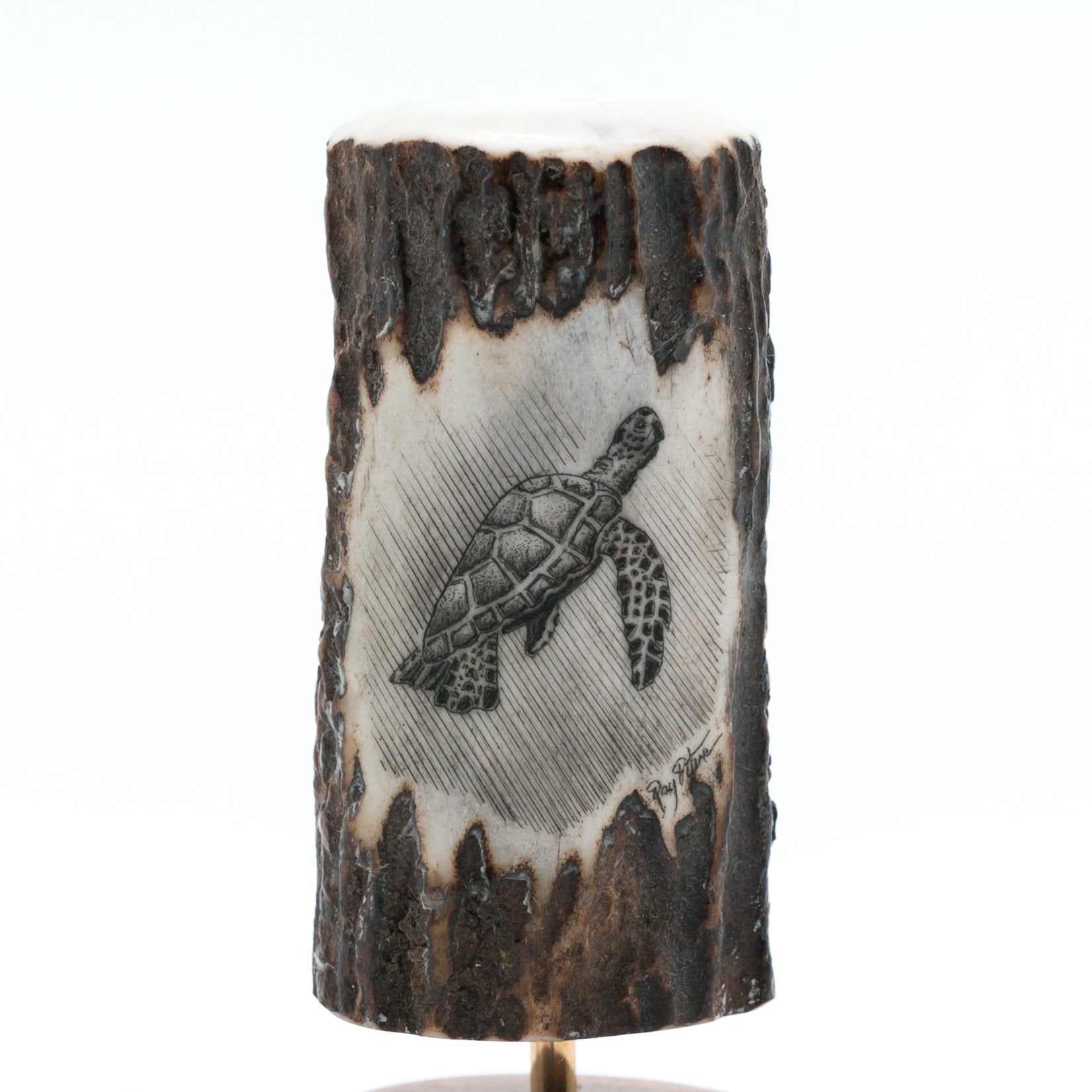
Let’s Talk About Scrimshaw
Carving - it’s something we’ve all done at one time or another. Maybe you’ve carved a spooky face into a pumpkin, your initials into a tree trunk, or (if you’re really crafty) an owl into a stump. These are all common practices, but have you ever seen carved ivory or bone? It sounds alarming, but it’s not! The art is called scrimshaw and, in fact, it’s quite beautiful.
What is Scrimshaw?
Scrimshaw is scrollwork, engravings, or carvings done in bone or ivory that was engraved on byproducts of whales. These byproducts can include bones, teeth, cartilage, and more.
Most commonly, Scrimshaw is made using the teeth and bones from sperm whales. These patterns can be found on anything, from home décor pieces to meaningful Maui hook necklaces.
Materials Used for Scrimshaw
If you’re wondering how to do scrimshaw, or what you can use to engrave your artwork, these are the most popular materials found in our jewelry and other designs throughout history:
- Other whalebones
- Walrus tusks
- Elephant ivories
- Mollusks
- Hippo ivories
- Woolly mammoth bones
- Antique piano keys
- Ivory cue balls
- Antler bone
- Buffalo horn
The History of Scrimshaw
Scrimshaw dates back to the early 1800s. The earliest known example is a sperm whale tooth that depicts the whaleship, Adam, of London. It is dated 1817 and was carved by an anonymous artist.
Given Nantucket’s proximity to the ocean, it’s not surprising that the first known scrimshaw was created by Edward Burdett who hailed from there. He began his career in 1822. Meanwhile, the first scrimshaw artist to actually sign and date his works was Frederick Myrick, another Nantucket native. These two were the leaders in scrimshaw, paving the way for scrimshaw artists from across the globe who followed in their footsteps.
This practice is considered to be an indigenous American art form, which is a notable praise! If that is true, it'd be the only indigenous American art form outside of Native American handwork kept alive today with different designs, from handmade scrimshaw magnifying glasses to a desk figurine and more.
Why Do People Make Scrimshaw?
Whalers would go on expeditions that were extremely long. They tended to last three or four years with plenty of downtime. While whale watching is a fascinating Hawaiian experience, watching for whales for more than three to four hours would be exhausting!
While the primary goal of expeditions was to retrieve oil for trade and ambergris for perfume, the bones and teeth of the hunted whales were a byproduct given to sailors to carve. It was the perfect way to spend all that free time! Learning how to do scrimshaw carvings kept sailors out of trouble and provided another way for them to make money. If people pay for Hawaiian gifts such as a hula skirt or shark tooth pendants, they are sure to pay for something this unique and beautiful.
How to Do Scrimshaw Art
The art of carving ivory and bone has a process, as any art form does. Scrimshaw’s process has three steps.
- First, the artist must smooth down the rough outer ridges of the ivory or bone with knives. Sailors usually used shark skin as a natural sandpaper to smooth it down even further.
- Next, the whalers would polish the tooth with chamois, a leather made from sheep or lambskin.
- Finally, the artists would carve! They’d choose a subject matter and begin to create it on their chosen material.
What is Scrimshaw Used for Now?
You might be thinking, “Great, scrimshaw sounds like a cool thing back in the 1800s, but what’s the point of it now?” This is a fair question, seeing as there are not nearly as many whaling expeditions going on currently.
The most common use for scrimshaw now is gift-giving. Whether you select a whale shaped scrimshaw cribbage board or a unique Hawaiian gift, it’s almost a guarantee that the recipient has nothing like it and will appreciate its rareness. That said, there is a decent population of people that collect scrimshaw! If you’ve seen something like this in a friend or family member’s home before and weren’t quite sure what it was, be sure to ask them about it. Chances are, they might be a collector!
The great thing about these carvings and engravings is that they come in many different designs. The subject matter would typically be images of whale hunts or portraits of wives and sweethearts — but it could be anything. Those that still practice the art today tend to take requests for designs, whether it be a photo of your beloved pet or a mountain scene.
Scrimshaw for purchase is mostly found near oceans, such as in Hawaiian gift shops or Massachusetts souvenir stores. If you don’t find yourself in those locations, many of them have websites you can buy from.
If you want to see the best of the best scrimshaw pieces, we recommend going to either the New Bedford Whaling Museum or Nantucket Whaling Museum.
How to Properly Care for Scrimshaw
Like many Hawaiian gifts and collectibles, scrimshaw requires great care to preserve it for as long as possible. Ivory is very fragile!
If a piece looks dry, you can moisturize it with baby oil — just be sure it is unscented! Allow the baby oil to sit until as much of it as possible has soaked into the small, microscopic pores of the ivory. After oiling, seal the surface with a clear paste wax or high-end car wax.
Bone items are more fragile because they are more fibrous and porous. Everything from a scrimshaw pocket knife to a piece of jewelry can be treated with a light, clear mineral oil to preserve the shine and engravings.
Ultimately, the best way to preserve a scrimshaw piece is to be preventative.
3 Care Tips for Scrimshaw
- Keep the piece out of direct sunlight
- Handle scrimshaw with cotton gloves or freshly washed hands
- Avoid keeping the piece in places with changing temperatures and humidity
If you or someone you know has an appreciation for historical art and collectibles, consider looking at a carved or engraved piece of scrimshaw as their next gift. With a variety of styles to choose from, our scrimshaw is perfect for any occasion.
Think someone in your life might enjoy other Hawaiian gifts? Our jewelry, wallets, and knives are wonderful gifts for bringing a piece of the aloha spirit to someone’s home!




